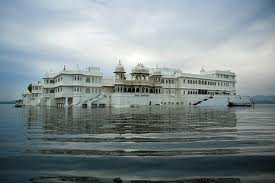August to November
are the best months of the year to watch the waterfalls in India. That's when the
gently cascading waters would transform into gushing, plunging, voluminous, outstanding, powerful
and intimidating water bodies - adding magnetism to an already attractive
mountain landscape.
While
some have the luxury of being perennial, some aren’t!
Meaning – no rainfall….no
waterfall. So now you know why you need to visit the nearest waterfalls this
monsoon.
The
three waterfalls of India which have topped the lists are:
Kunchikal Falls – 1493 feet drop - the highest waterfalls in India and the second highest waterfalls in Asia. It is located in the Western Ghats and is caused by the River Varahi in Shimoga District of Karnataka State. While Rivers Tunga and Bhadra flow through the Shimoga District, Rivers, Sharavathi, Gangavathi, Tadadi and Kali originate in this District. But that’s not the cause for the highest waterfalls in India. It is being on the Western Ghat slopes and receiving one of the highest degrees of rainfall in the country that is causing it. The popular ‘Jog Waterfalls’ and ‘Barkana Falls’ which draw thousands of tourists are also in Shimoga District.
Barehipani Falls – 1309 feet drop – a two-tiered waterfall which is the second highest waterfalls in India and is formed by River Budhabalanga in in Mayurbhanj District of Orissa State. The falls are situated in the Simlipal National Park which is home to 100 Royal Bengal Tigers and 432 Asian Elephants among other wildlife.
And my personal favourites are:
Jog Falls – 829 feet drop – the second highest ‘plunge-waterfall’ in India – formed by Sharavathi River in Shimoga District in Karnataka. 1500 steps lead downhill from the view point to the bottom of the hill - opposite the falls giving you the complete full-frontal view of the falls which is a rarity considering that most natural landscape surrounding natural waterfalls do not permit the fully frontal up-close view. It’s the monsoon water that turns this stringy drop to a full-blown avalanche of white frothy water causing misty surrounding.
Hogenakkal Falls – 66 feet drop – formed by River Kaveri in Dharmapuri District of Tamil Nadu State. Its claim to fame is its resemblance to the Great Niagara Falls because of which it is also called the ‘Niagara of India’. Boat rides are major tourist attraction here.
Dudhsagar Falls – 1017 feet drop – formed by River Mandovi on the Goa-Karnataka border in Goa State. It is a multi-tiered waterfall located in Bhagwan Mahavir Wild Life Sanctuary on the Western Ghats. During the monsoons, the Dudhsagar Falls swell up to a width of 100 feet making it one of the most powerful falls in India. Riding the train over the Falls is a major tourist attraction. Trekking around these Falls is another major tourist attraction. Tourists are allowed in this area only from October.
Dhuandhar Falls – 98 feet drop – formed by River Narmada in Jabalpur District of Madhya Pradesh State. This is a large roaring waterfalls which is heard from a distance. In peak monsoon, these Falls look like there are taking the Earth with them. The cable-car ride over these Falls is a uniquely thrilling experience.
Kiliyur Falls – 300 feet drop – formed by overflow of Yercaud Lake in the Eastern Ghats in Tamil Nadu. It is a picturesque multi-tiered waterfall which falls down a stone slope. The monsoon-volume of the water in the Falls causes several mini umbrella falls on the slopes – increasing its visual appeal.
Meenmutty Falls – 984 feet drop – the highest waterfalls of Kerala State in Wayanad District. Scores points on visual eye-appeal of a thundering waterfall in dense virgin forests of the Western Ghats.

























